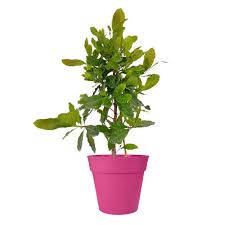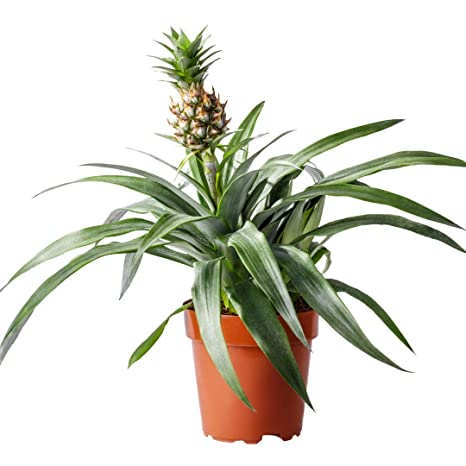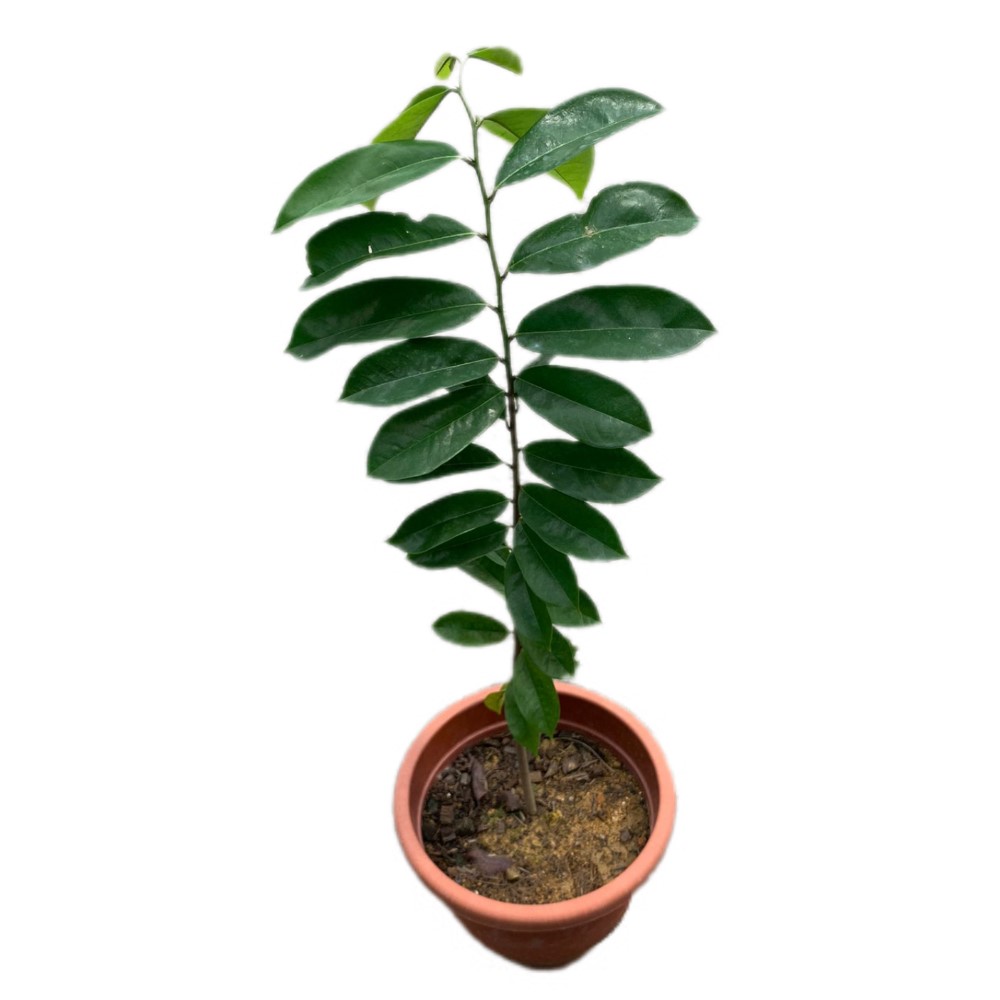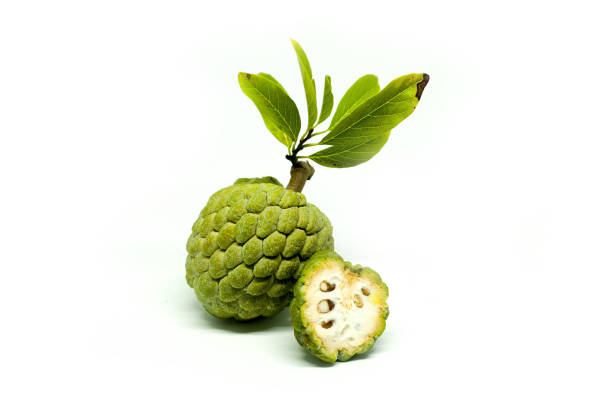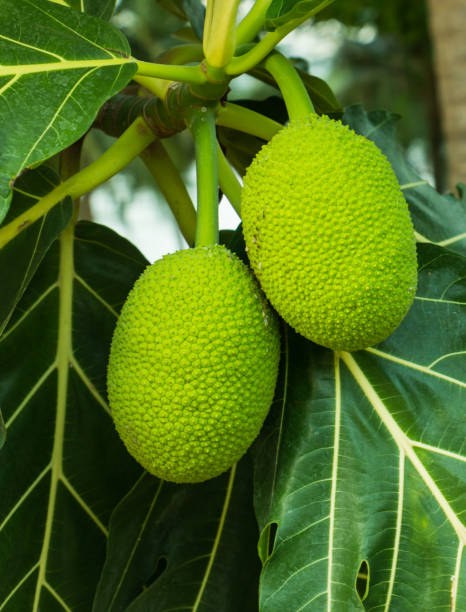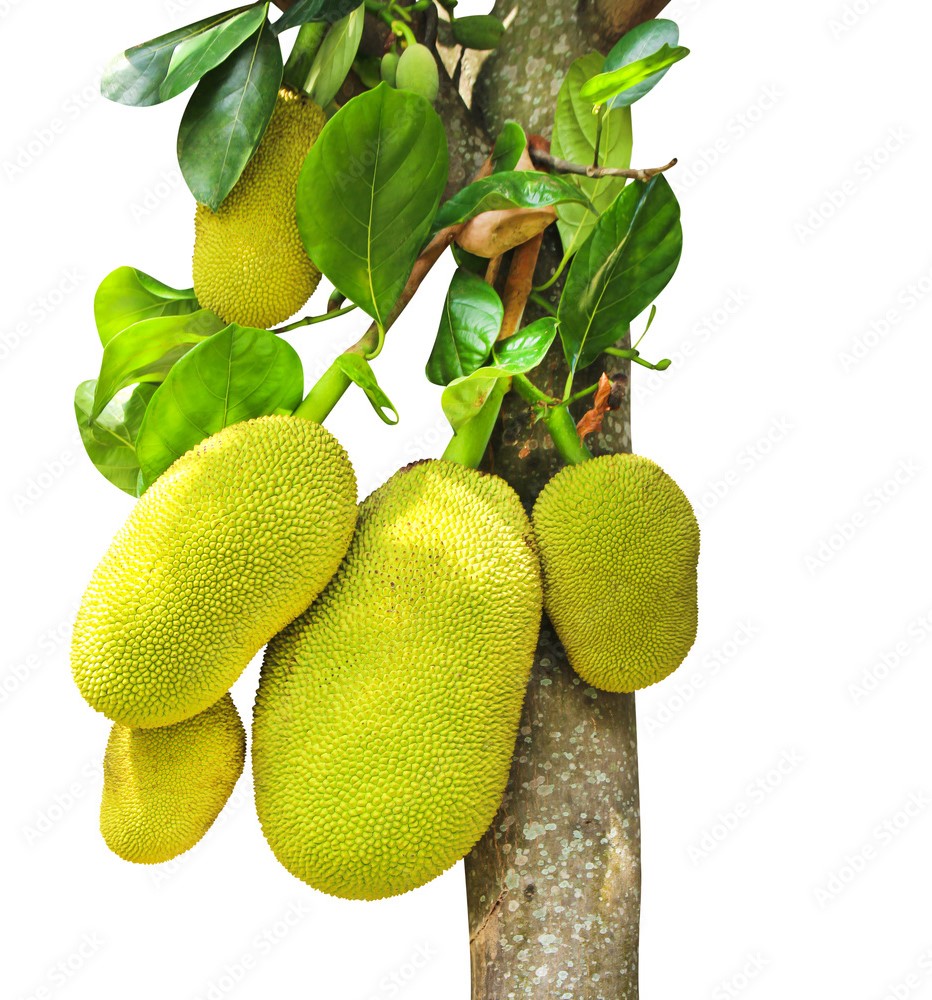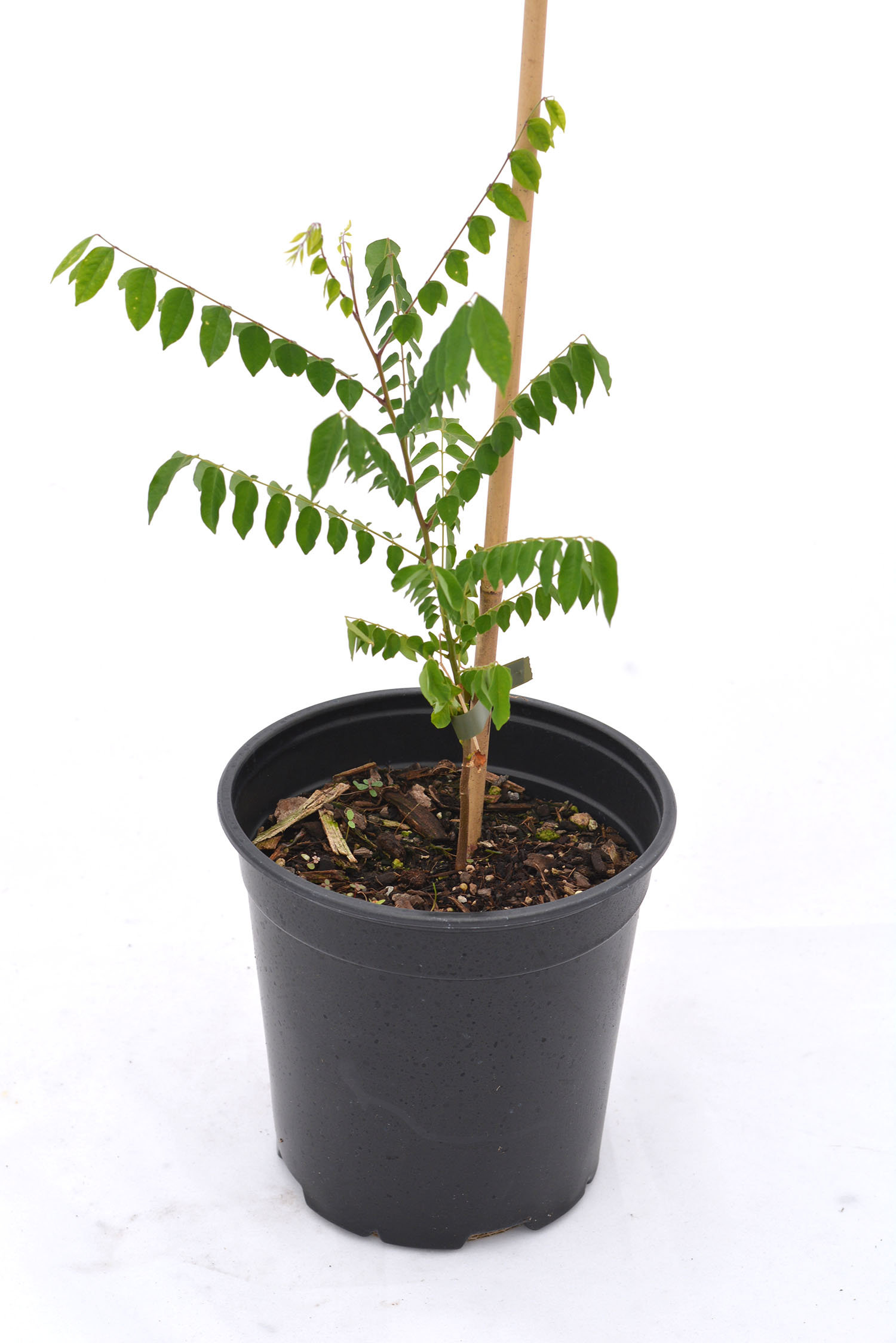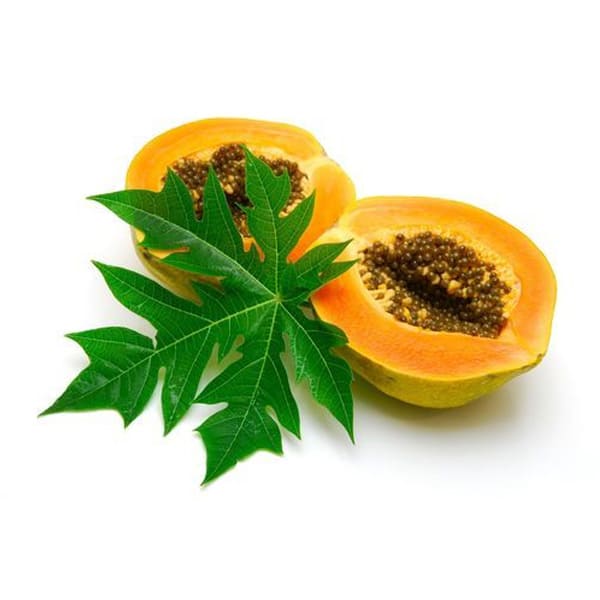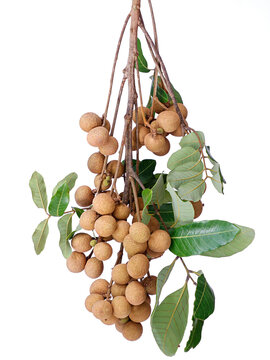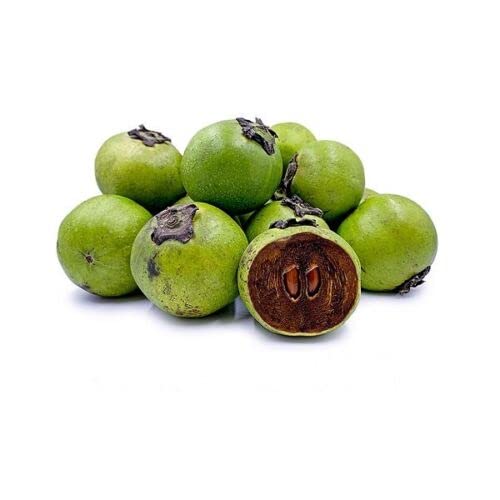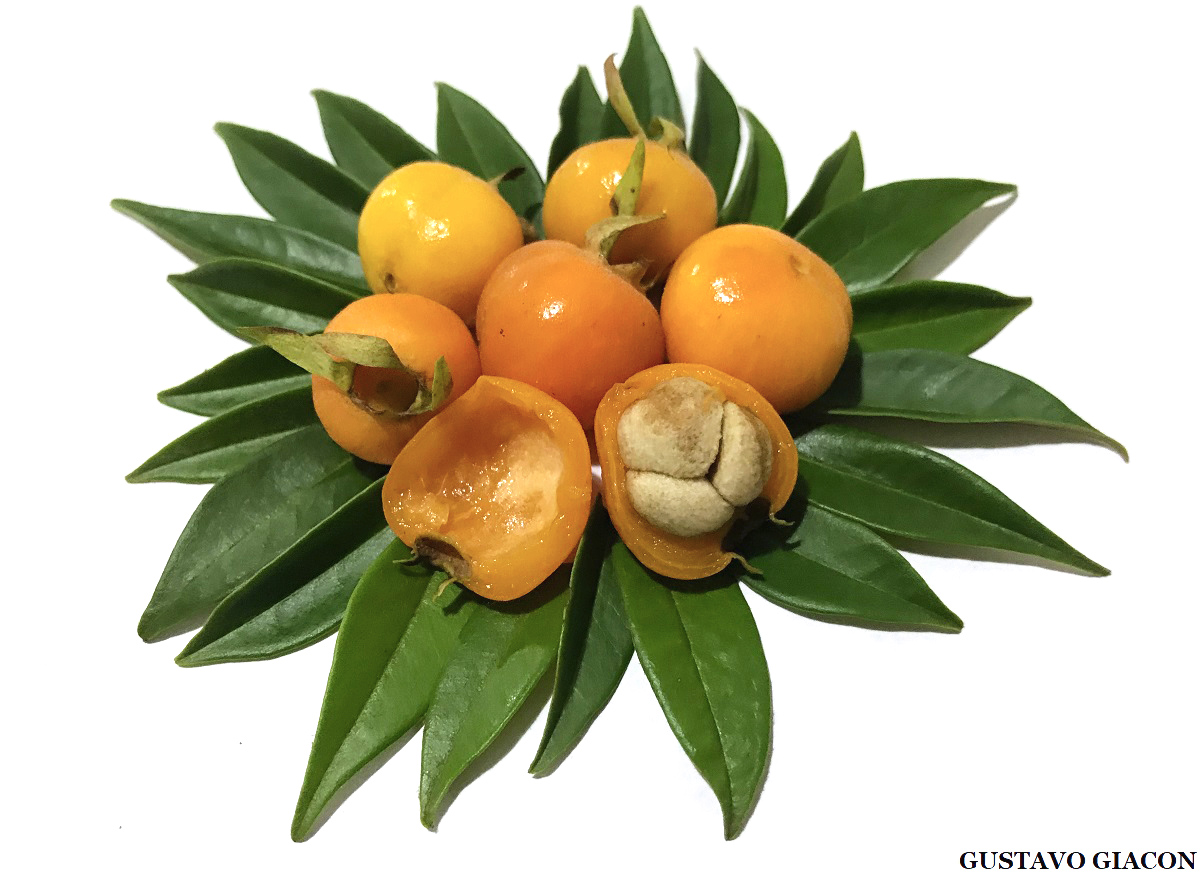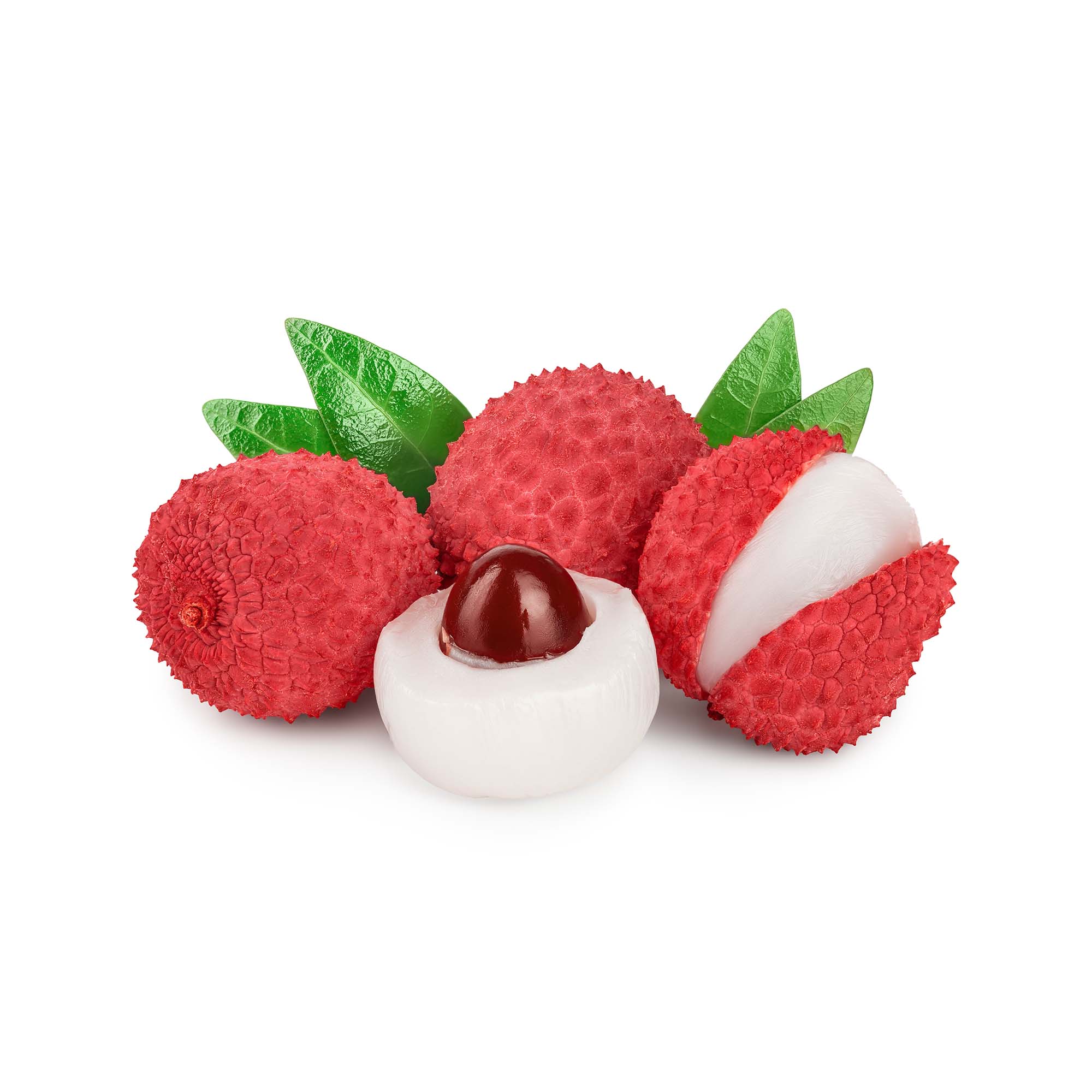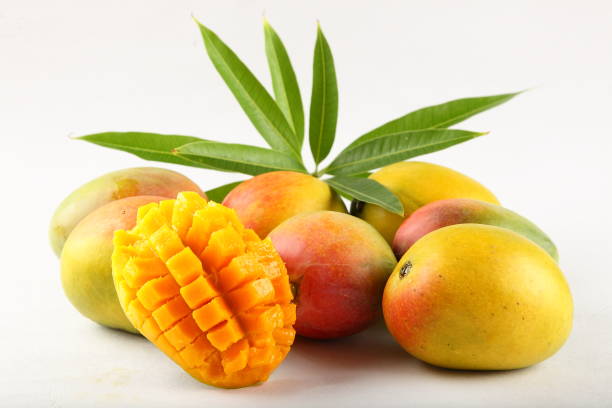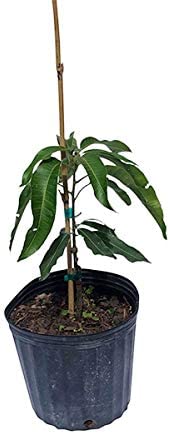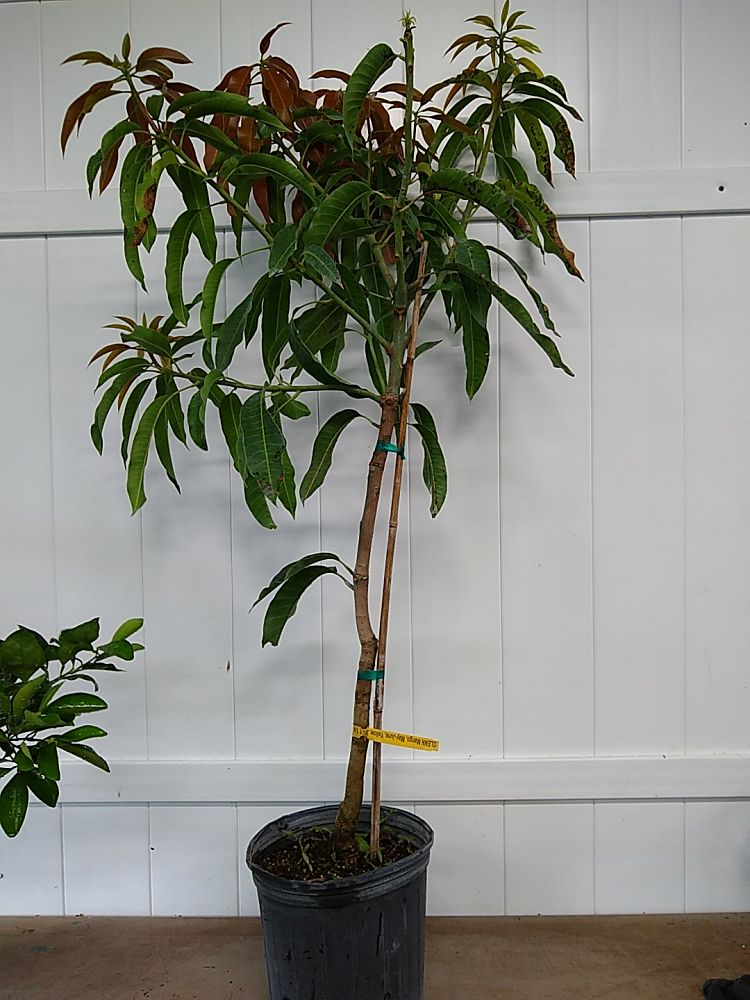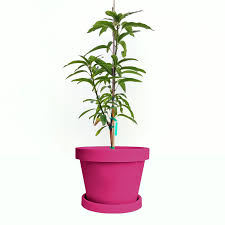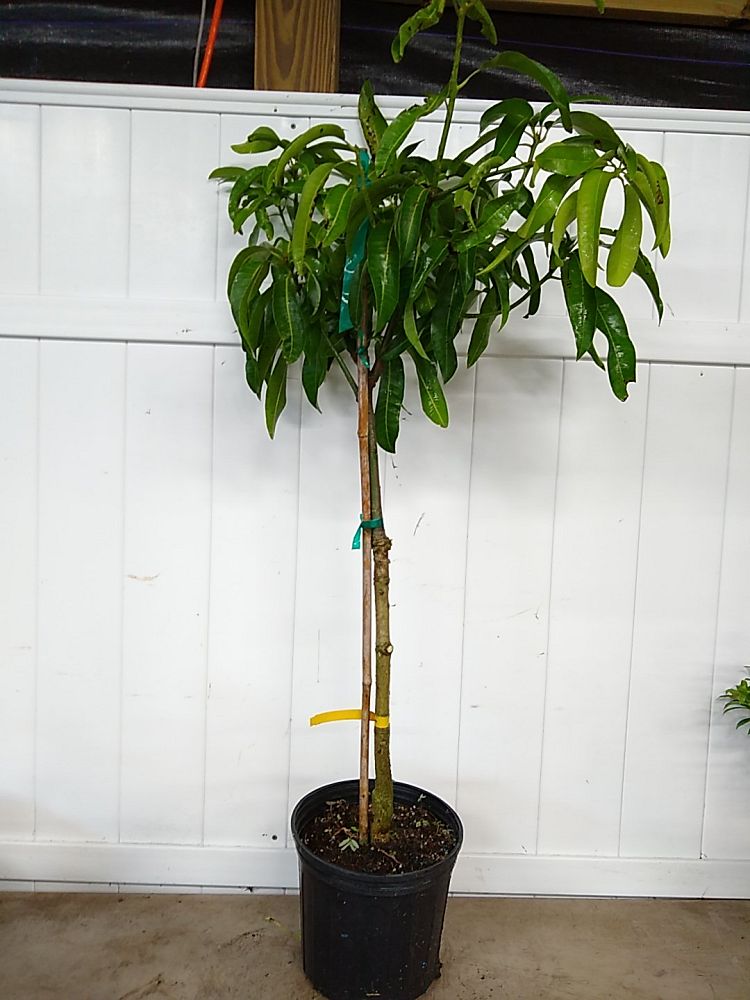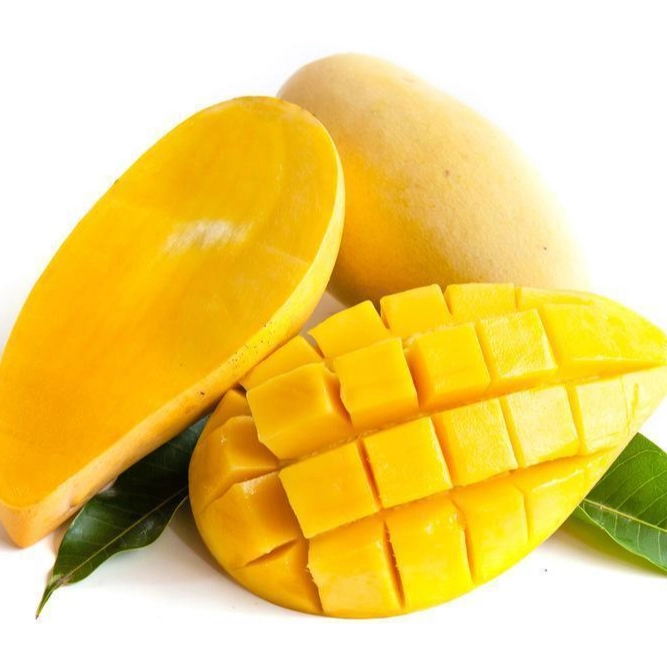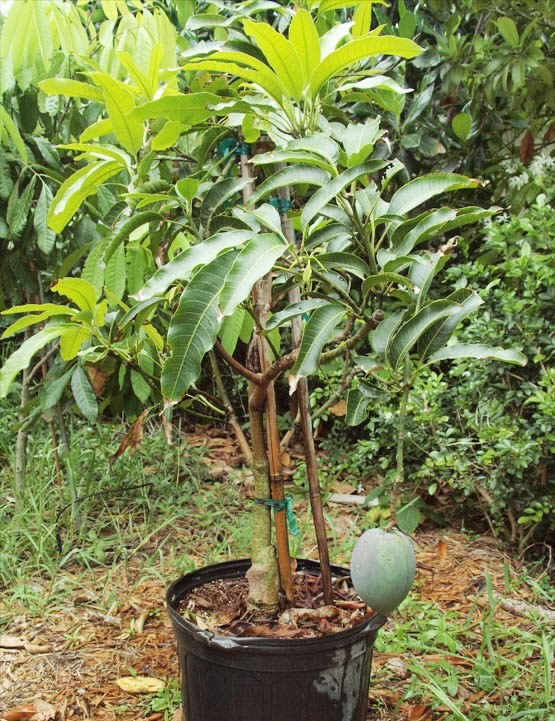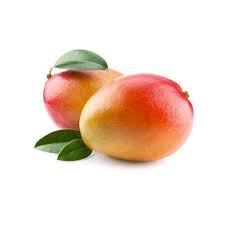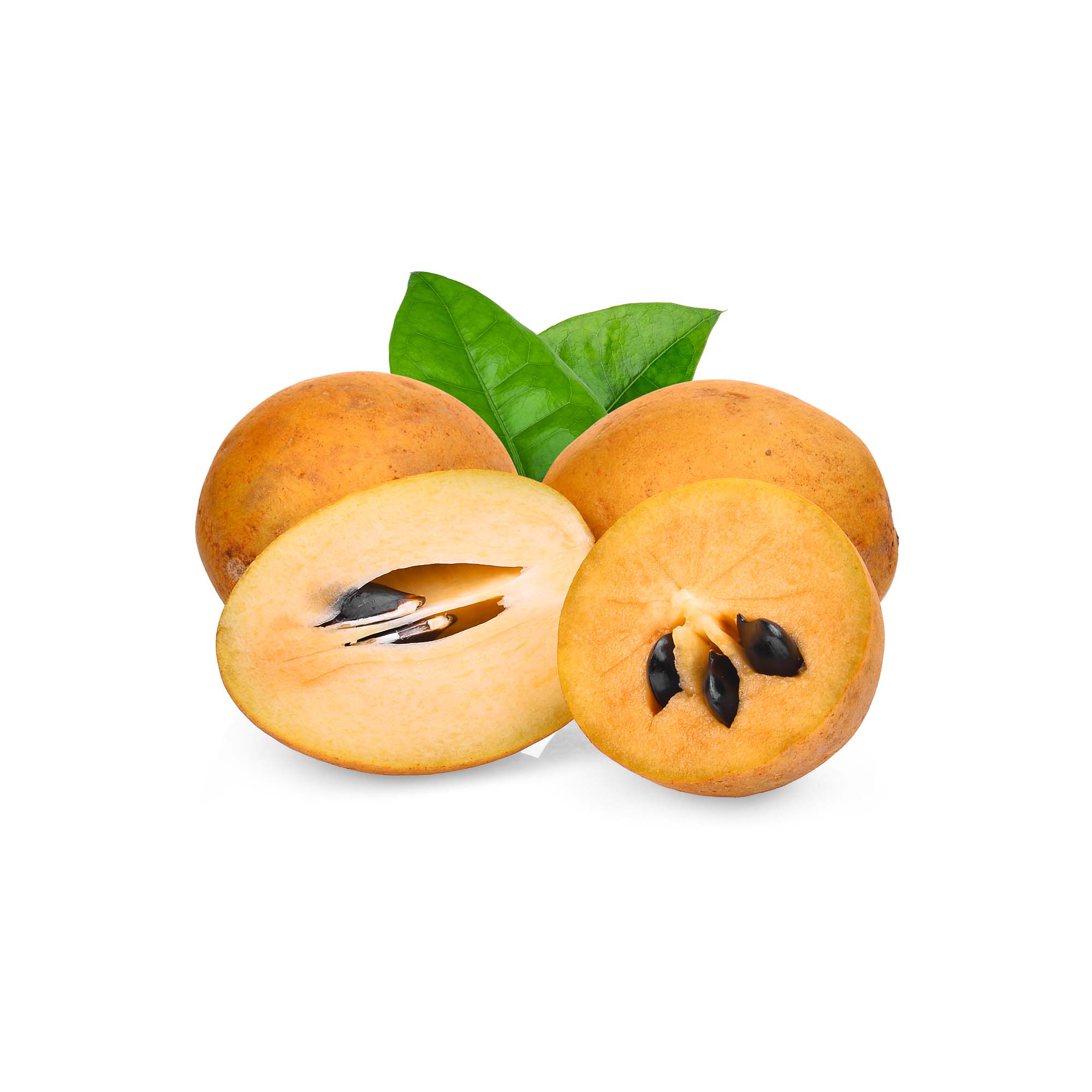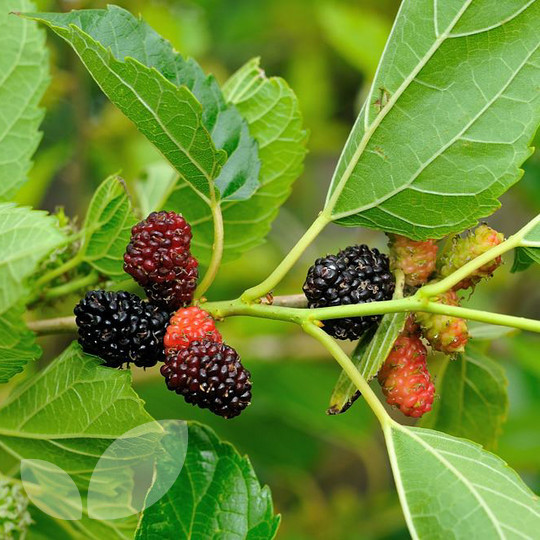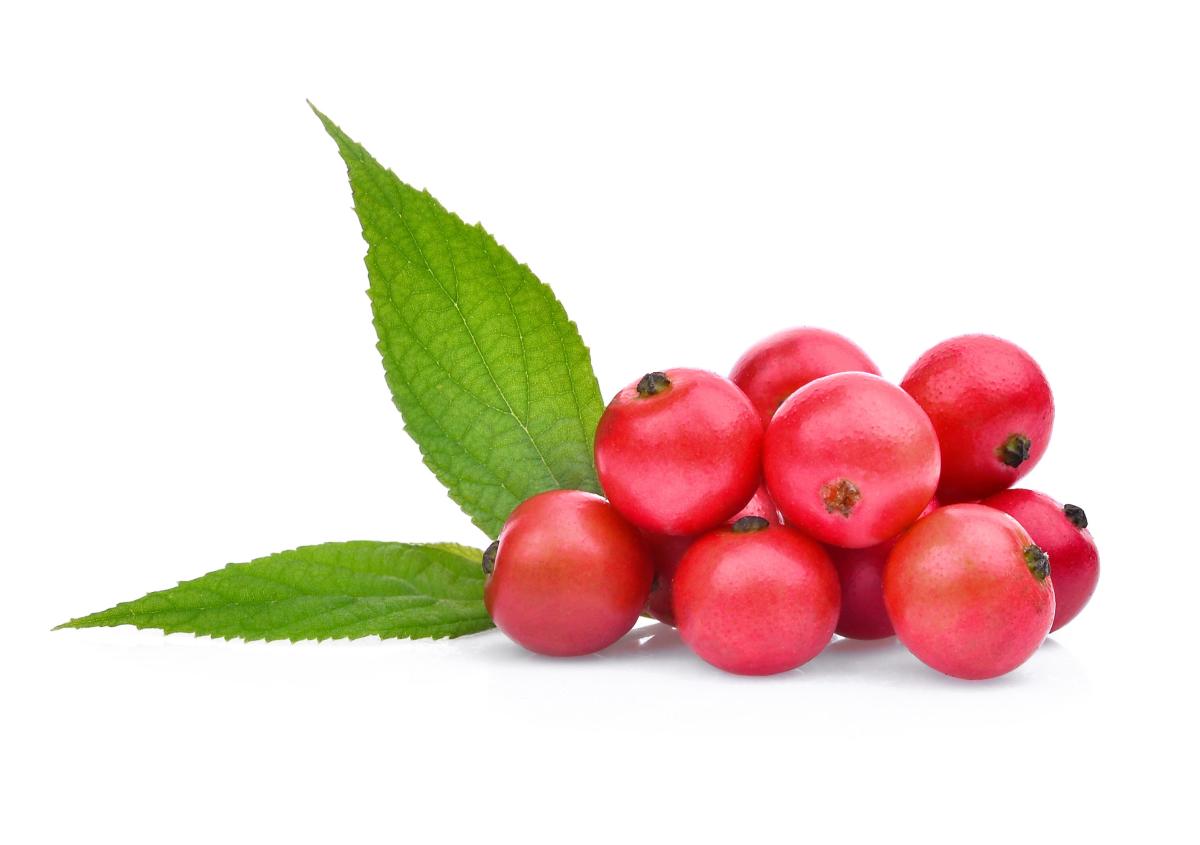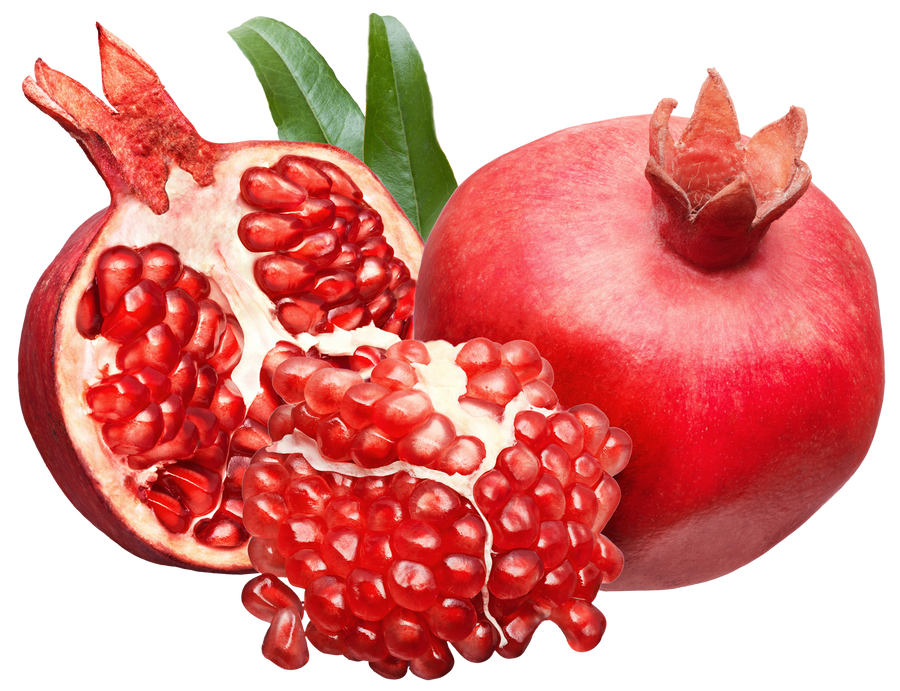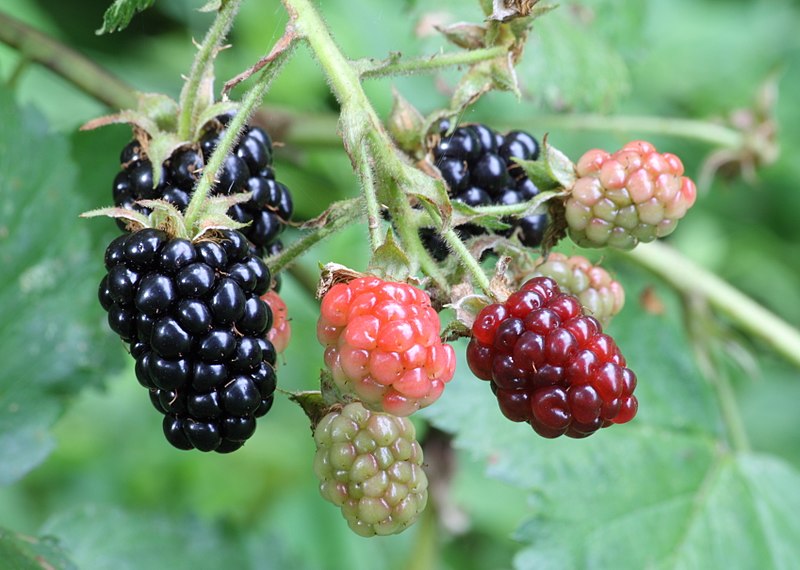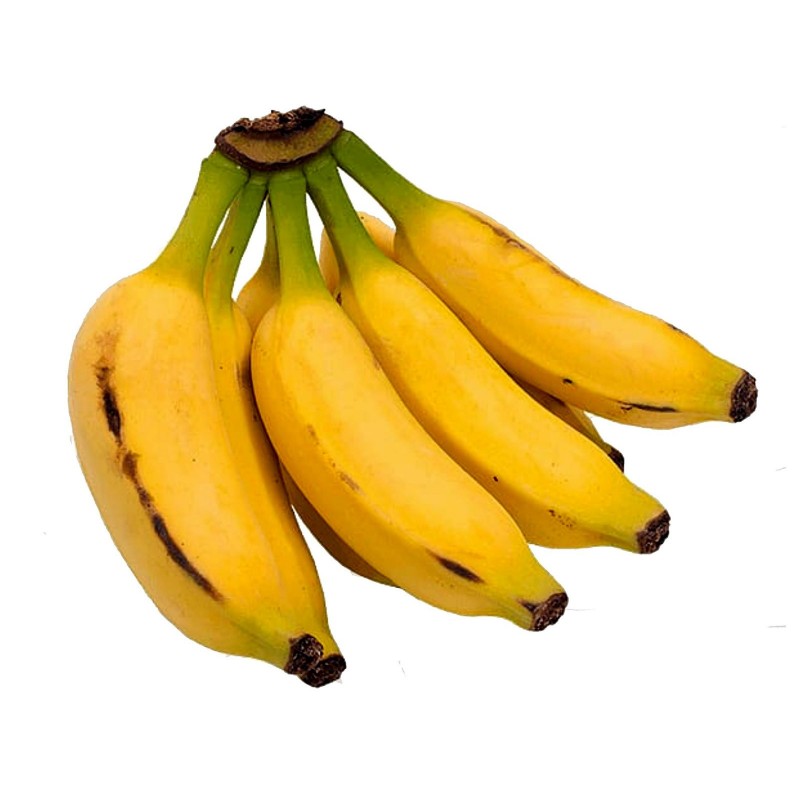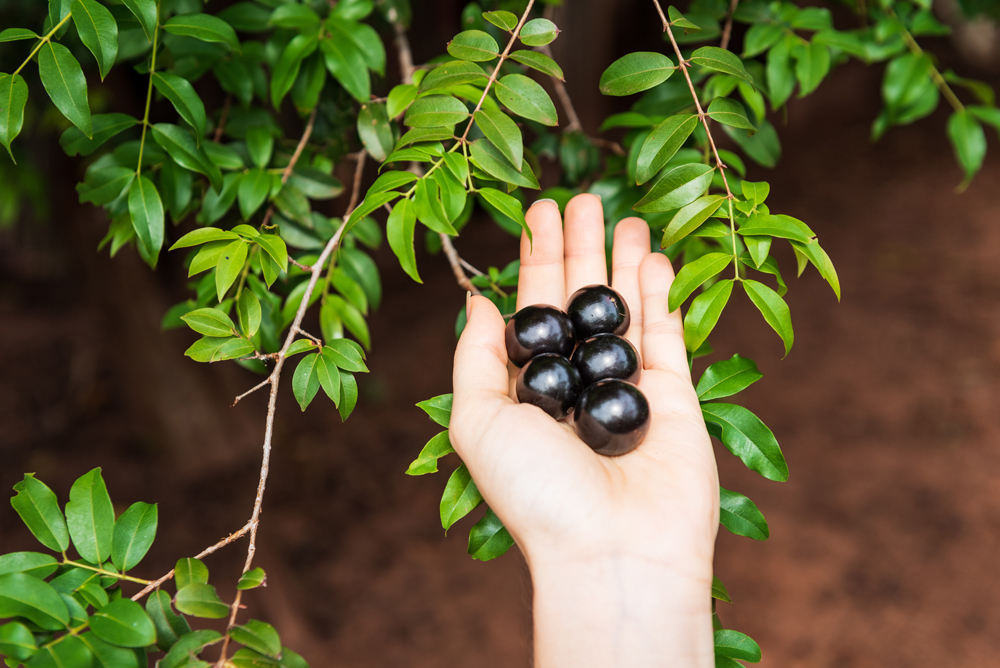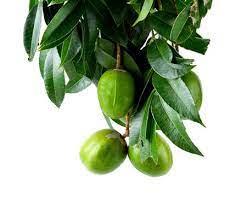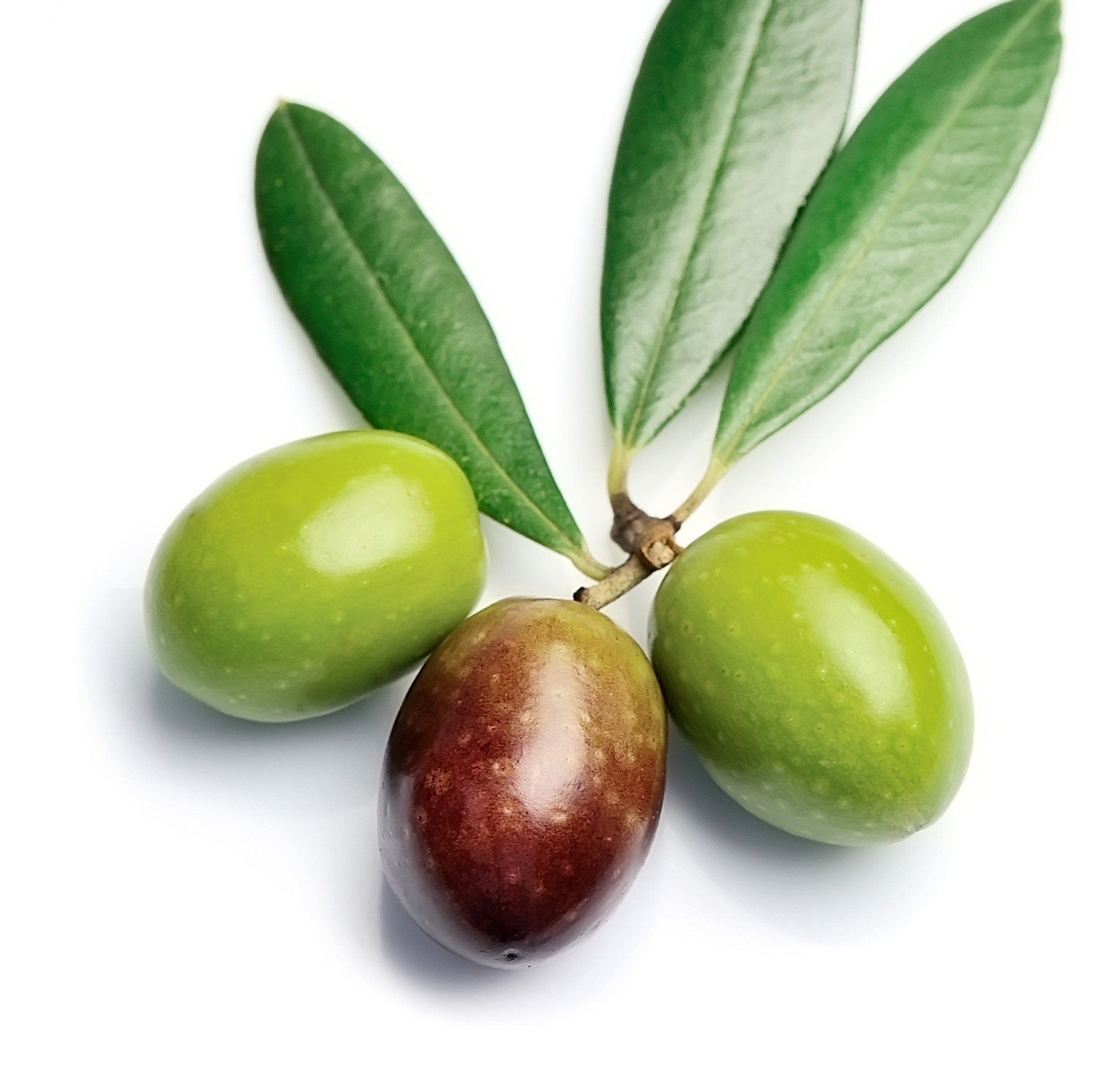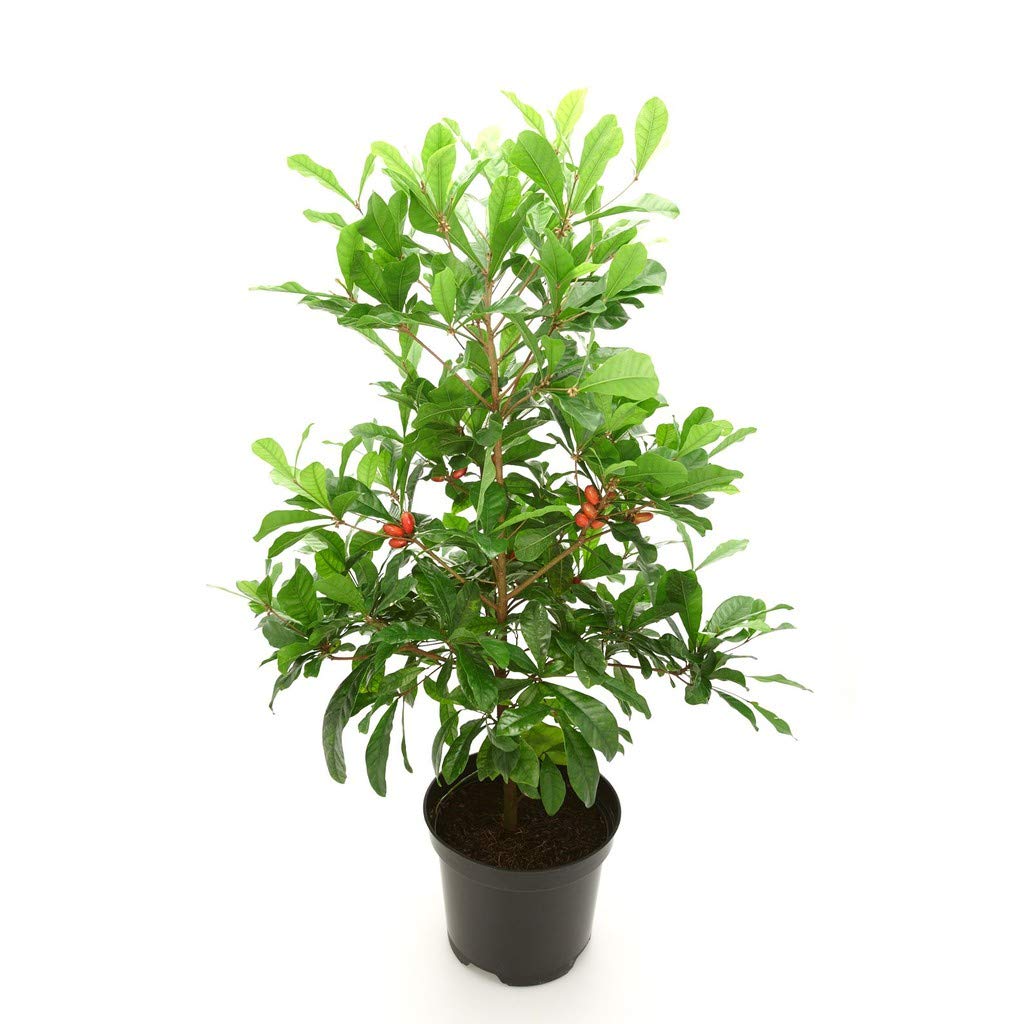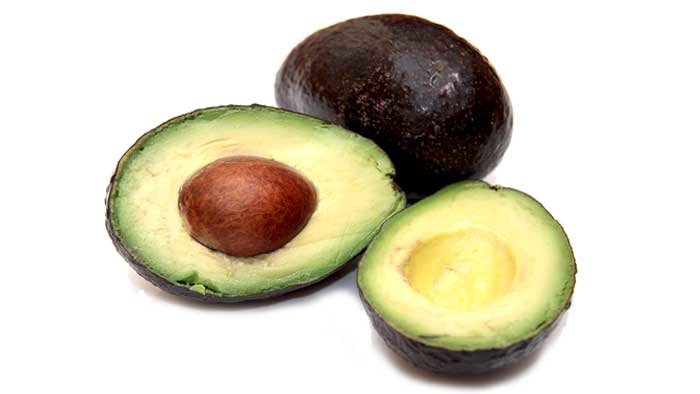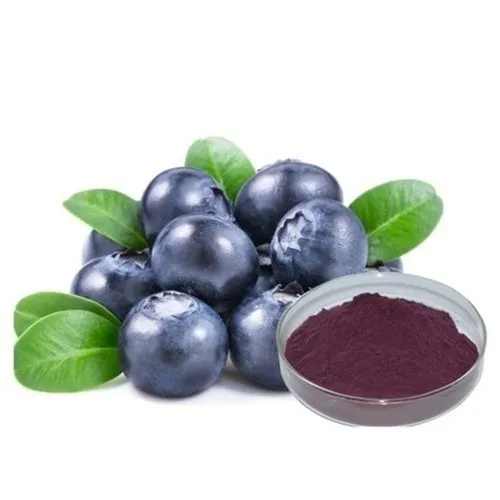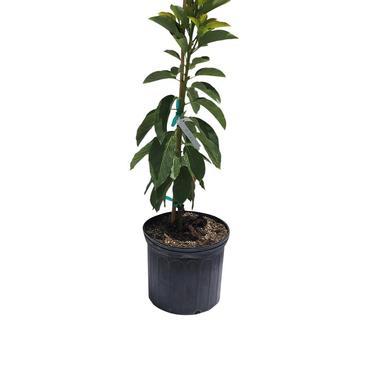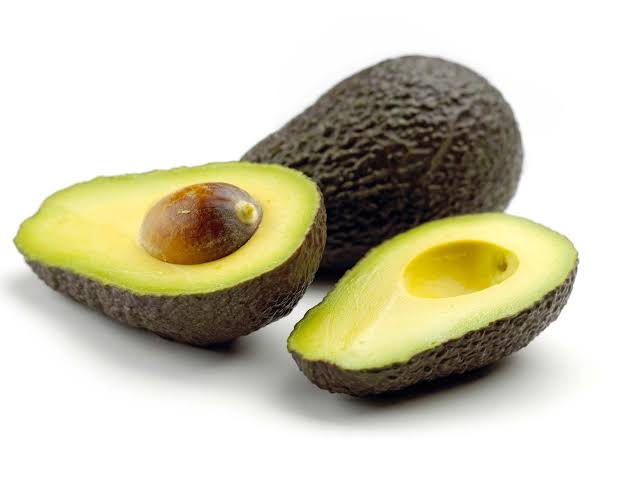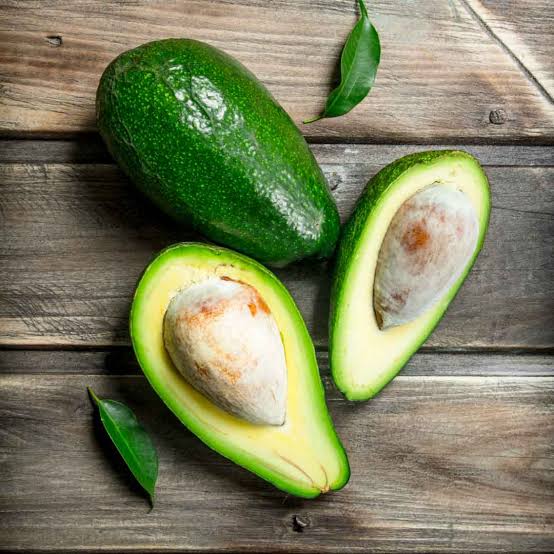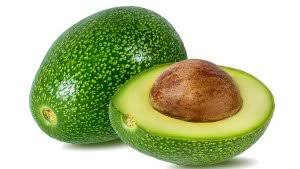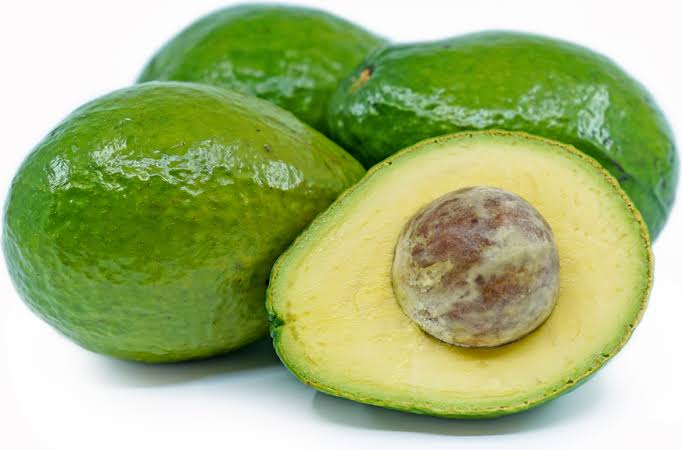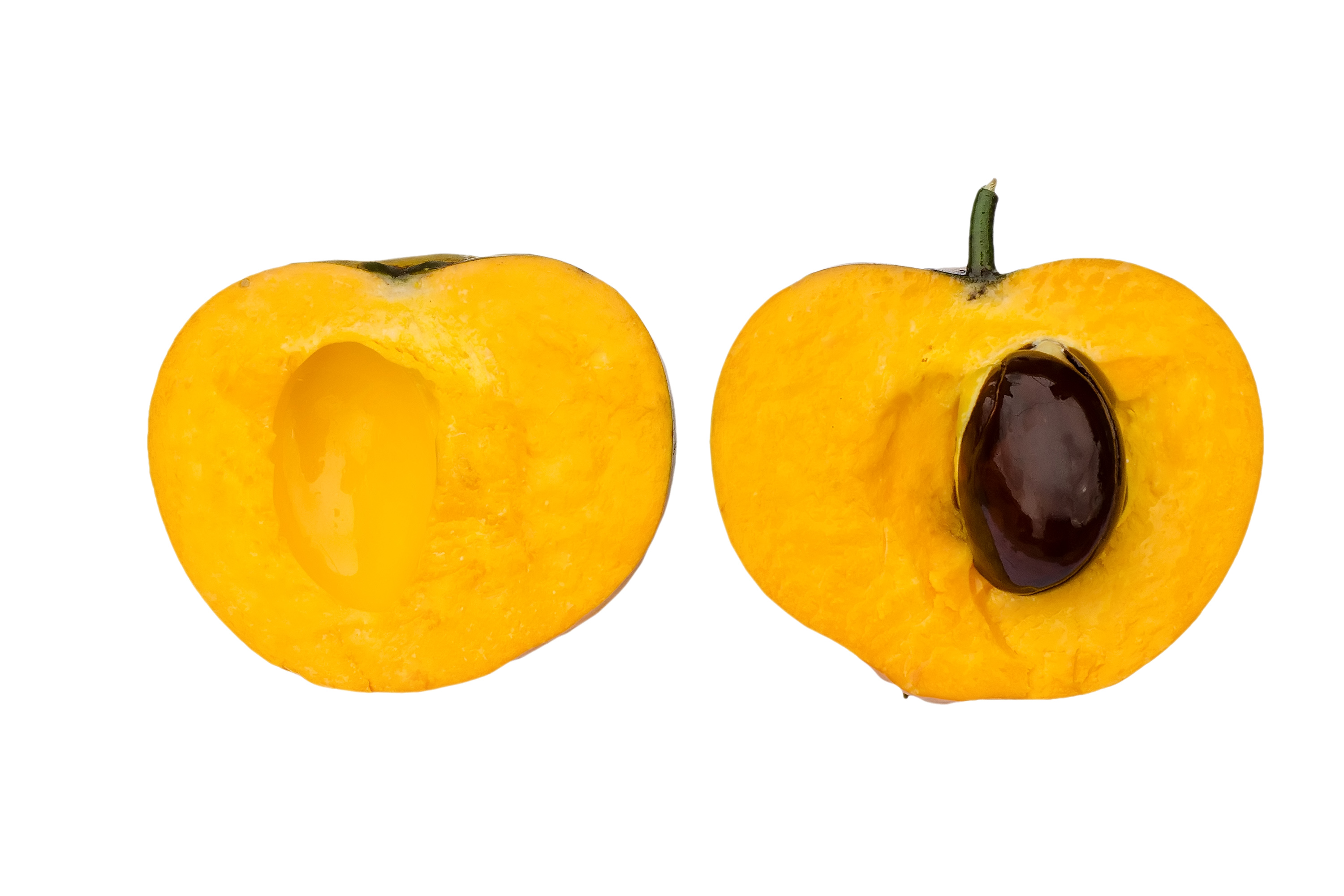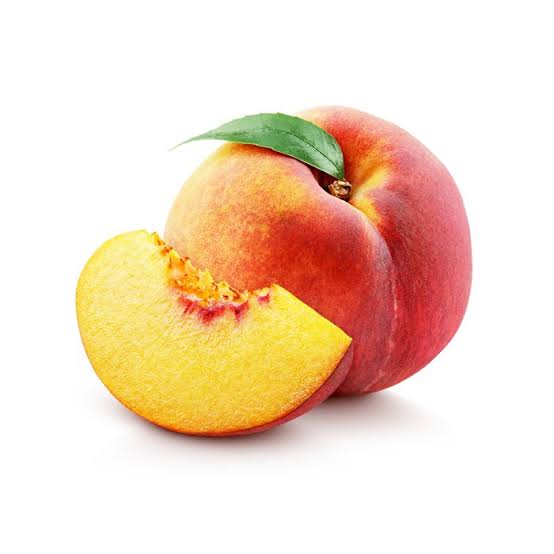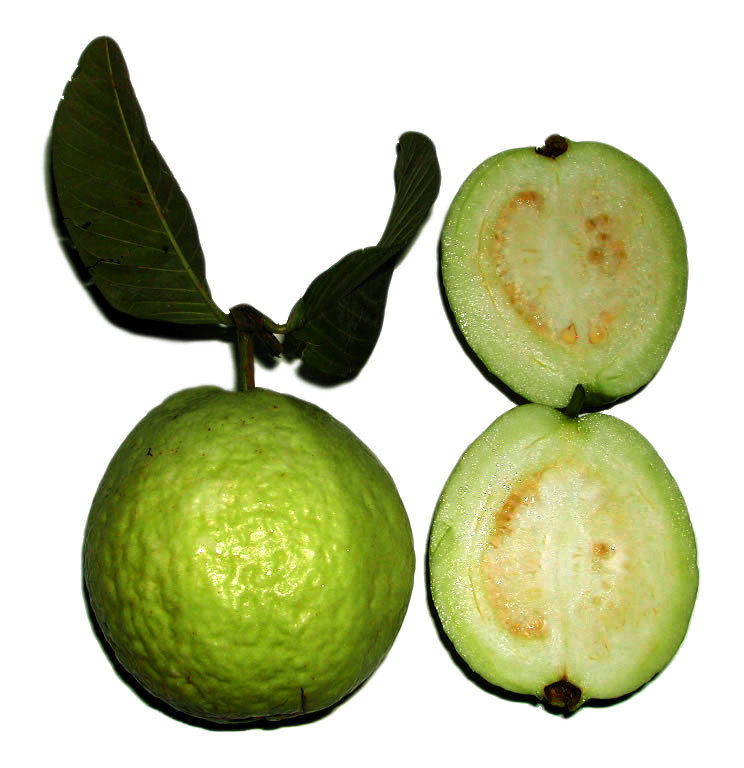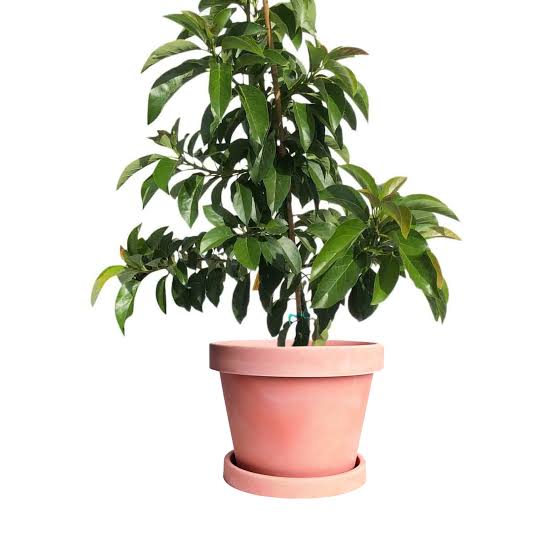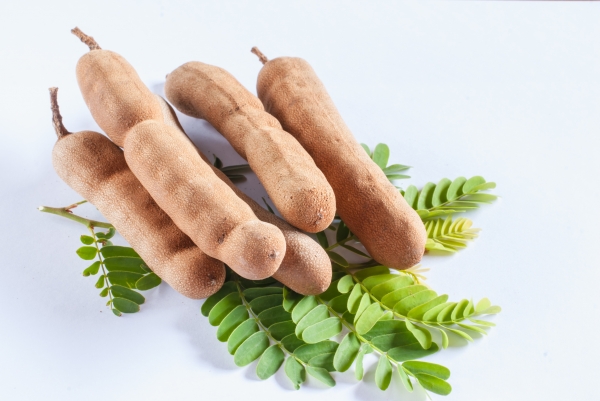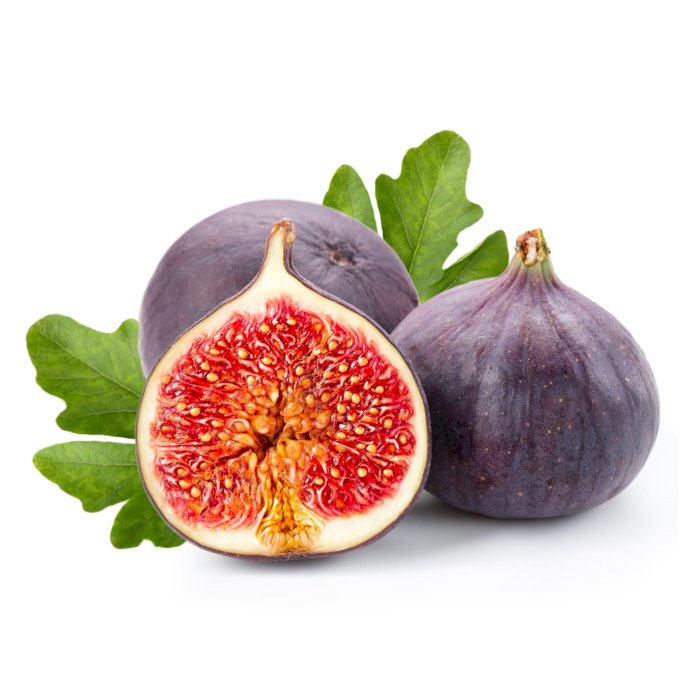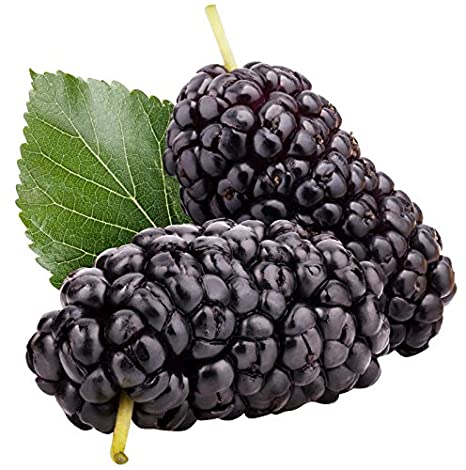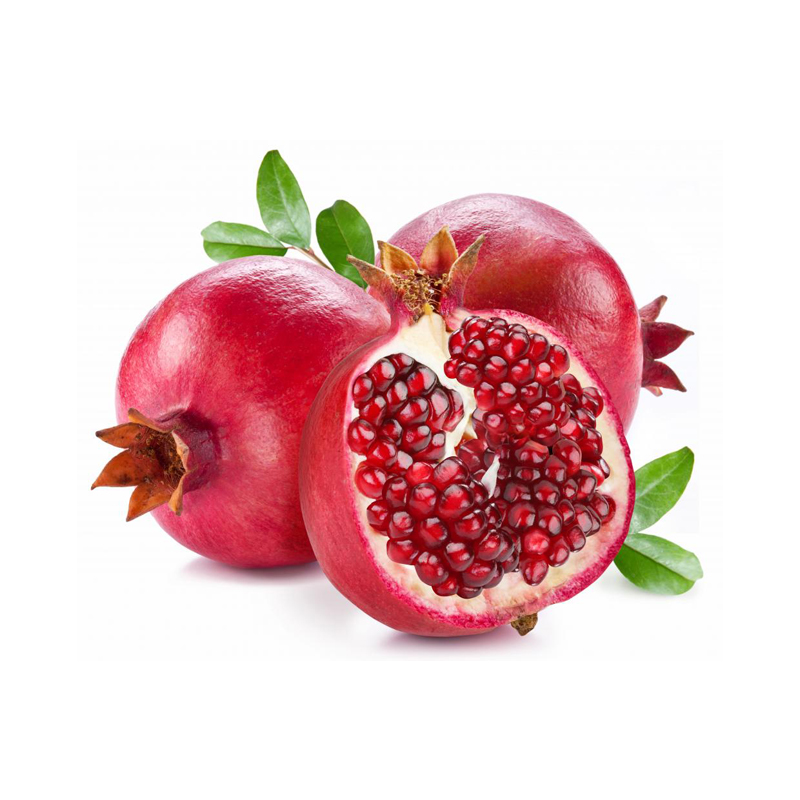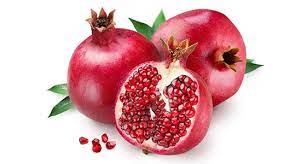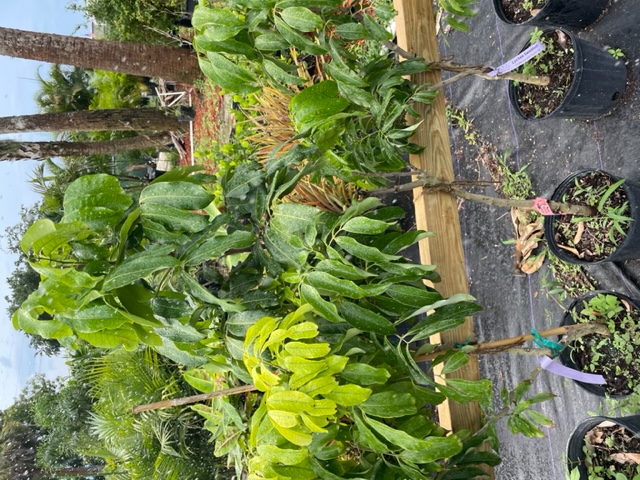Anacardium occidentale Cashew
Sieze: 10
Specification: 3' tall, true source of nut
Anacardium occidentale, commonly known as Cashew is a much branched, evergreen small tree. Cashew is now one of the most commonly cultiv
Ananas comosus Pineapple
size: 10
specification : 2-3' tall, plants fruit within 1-2 years
Pineapple is grown in tropical climates where the best fruit production is achieved. After bananas and citrus, pineapples are the 3rd most cultivated tropical fruit. Most pineapple grown for consumption is of the 'Cayenne' or 'Smooth Cayenne' variety.
Annona muricata Soursop (Guanabana)
size: 10
specification:3' tall, Latin favorite, year round producer
Annona muricata (A. muricata) is a tropical plant species belonging to family Annonaceae and known for its many medicinal uses.
This review focuses on the research history of its traditional uses, phytochemicals, pharmacological activities, toxicological aspects of the extracts and isolated compounds, as well as the in vitro propagation studies with the objective of stimulating further studies on this plant for human consumption and treatment.
Annona reticulata Red Custard Apple
size:10
specification:3' tall, red skin, custard-like pulp
custard apple, (genus Annona), genus of about 170 species of small trees or shrubs of the family Annonaceae, native to the New World tropics. Custard apples are of local importance as traditional medicines, and several species are commercially grown for their edible fruits.
Annona squamosa Sugar Apple (Anon)
size:10
specification: 3' tall, pineapple/banana/custard flavor
Annona squamosa is a small, well-branched tree or shrub[7] from the family Annonaceae that bears edible fruits called sugar-apples or sweetsops. It tolerates a tropical lowland climate better than its relatives Annona reticulata and Annona cherimola[6] (whose fruits often share the same name)[3] helping make it the most widely cultivated of these species.[
Artocarpus altilis Breadfruit
size:10
specification : 3' tall, rare icon of the tropics
breadfruit, (Artocarpus altilis), tree of the mulberry family (Moraceae) and its large fruits that are a staple food of the South Pacific and other tropical areas. Breadfruit contains considerable amounts of starch and is seldom eaten raw. It may be roasted, baked, boiled, fried, or dried and ground into flour.
Artocarpus heterophylla Jakfruit
size:10
specification: 3' tall, mango/cantaloupe/pineapple flavor
Jackfruit is a tree which is unique in the fact that it produced huge fruits directly from its stem. Jackfruit is most probably native of the rain-forests of the Western Ghats. In fact, the name Jackfruit is derived from the malayalam name chakka. The tree is handsome and stately, 30-70 ft tall, with evergreen, alternate, glossy, somewhat leathery leaves to 9 in long, oval on mature trees, sometimes oblong or deeply lobed on young shoots. All parts contain a sticky, white latex. Short, stout flowering twigs emerge from the trunk and large branches, or even from the soil-covered base of very old trees
Averrhoa carambola Carambola (Star Fruit)
size: 10
specification:3' tall, trees fruit very prolifically
Averrhoa carambola is a slow growing species of woody plants; it is multi-stemmed with short trunk and best grows up to 6 to 9 m in height. It has a bushy appearance with many branches producing a broad, rounded crown and a trunk base which can reach up to 15cm in diameter [3,11].
Carica papaya Papaya
size: 10
specification: 2-3' tall, self pollinating dwarf
Carica papaya is a herbaceous succulent plant popularly known as pawpaw, and belongs to the Caricaceae family. It is native to the tropics of the Americas but now is widely cultivated in other tropical regions of the world for its edible melon-like fruit, which is available throughout the year [125]. Different parts of the plant are employed in the treatment of different human and veterinary diseases in various parts of the world.
Dimocarpus longana Longan
size:10
specification: 3-4' tall, tastes like grape and honey
longan, (Dimocarpus longan), also spelled lungan, tropical fruit tree of the soapberry family (Sapindaceae), native to Asia and introduced into other warm regions of the world. The edible white-fleshed fruits are somewhat similar to the related lychee and are commonly sold fresh, dried, or canned in syrup. The juicy flesh has a mildly sweet and musky flavour.
Diospyros digyna
Black sapote or Diospyros digyna is a tropical fruit tree native to Mexico, the Caribbean, Central America, and Colombia. It is also known as chocolate pudding fruit, chocolate persimmon, and zapote prieto. It is evergreen that can grow up to 25 m in height with trunk diameter of up to 45 cm. It has a rounded crown, black bark, and glossy, dark green leaves.
Black Sapote
size:10
specification: 3' tall, chocolate pudding fruit
Black Sapotes are round, squat fruits that look similar to a persimmon albeit a green version. The skin of a Black Sapote is initially an olive green and it will darken as it ripens and will develop the occasional black speckles. The pulp is white when unripe and turns dark brown to almost black when ripe. It has a sweet, custardy, chocolate-like flavor, which is how it got its nickname.
Eugenia luschnathiana Pitomba
size:10
specification: 3' tall, tastes like apricot
Pitomba is the most slow growing of all Eugenias, growing to 15-20 ft. It is an excellent ornamental plant as well as valuable fruit tree. Leaves are dark green above, lighter green underneath and the trunk is a beautiful light brown and tan. Snowy white yellow flowers up to an inch and a half across are borne during the spring months and the fruit ripens 4-6 weeks later. Fruiting season is May-July, sometimes there is also a light Fall crop.
Eugenia selloi Star Cherry/Pitangatuba
size:10
specification: 3' tall, ultra rare Brazilian cherry
Native to Brazil, the rare, bright yellow Pitangatuba fruit has a very unique and extremely powerful flavor. Pitangatuba fruit tastes simultaneously sweet, and acidic, with a apricot-meets-mango-like flavor that's really unlike anything you've ever experienced.
Ficus carica Fig
size: 10
specification: 3-4' tall, assorted varieties
Common fig is a small tree or large shrub in the Moraceae (mulberry) family with attractive leaves and desirable edible fruits. Grows to a mature size of 10 to 30 feet tall and wide quickly. The Latin name Ficus means edible fig and the species carica refers to Caria, a region in Asia known for rowing figs.
Garcinia humilis Achacha
size: 10
specification: 3' tall, rare Mangosteen relative
Garcinia humilis is a fruit known as achachairú. It is native to South American countries such as Bolivia, Peru, and Brazil, but it is also cultivated as achacha in northern Australia. The aim of this study was to determine the phytochemicals in achacha rind and pulp and to investigate these components as potential treatments for the symptoms of metabolic syndrome. Both rind and pulp contain procyanidins and citric acid rather than hydroxycitric acid.
Litchi chinensis Lychee Brewster
size:10
specification:3-4' tall, large fruit
Brewster Lychee is a tropical/subtropical fruit tree with a reliable nature to fruit and flower, making it great for a home or commercial landscape.The Brewster Lychee fruit has one of the best flavors, with the small trade-off of a slightly larger inner seed. Like other Lychee varieties, Brewster Lychee fruit has a unique purple-red outer shell and translucent flesh and texture of a grape and a sweet slightly tangy flavor.
Malpighia punicifolia Barbados Cherry 3 gallon
size:10
specification: 3-4' tall, some with flowers, very nice
Barbados cherry, (Malpighia emarginata), also called West Indian cherry or acerola, tropical and subtropical shrub or small tree (family Malpighiaceae), cultivated as an ornamental plant and for its tart edible fruits. The fruits are very rich in vitamin C and are used in preserves and commercial vitamin production. The plant is native to the West Indies and southern Texas southward to northern South America.
Mangifera indica Mango Alphonso
size:10
specification:3' tall, Indian favorite
The amazing golden Alphonso Mango is better known as the King of Mangoes! Alphonso, native to India and grown mostly throughout the western part of the continent. Alphonso is one of the most expensive mango varieties in the world. It's prized for it's rich, creamy, sweet flavor and non-fibrous texture. It's juicy flesh has a strong sweet aroma and a delicious tropical flavor with a hint of peach, apricot, and citrus.
Carrie
size:10
specification: 2-3' tall, fiberless Florida variety and delicious as can be
Carrie mango is a fiberless Florida cultivar that is exceptionally rich, sweet and flavorful which makes it an excellent quality eating mango. Its orange flesh is soft when ripe and highly aromatic. The fruit and tree is highly resistant to fungus and disease. The compact growth of this cultivar makes it an excellent choice for containers or planted in patio areas. Lack of color and firmness prevent this this from being a commercially viable otherwise this is a fine mango worthy of a space in your garden.
Cogshall (condo mango)
size: 10
specificaton : 2-3' tall, ultra compact variety
THIS "CONDO MANGO" IS AN ULTRA COMPACT GROWER THAT PRODUCES SWEET FIBERLESS FRUIT. THE TREE IS SUITABLE FOR CONTAINER GROWING ON A BALCONY, OR PLANTING IN A SUBURBAN BACKYARD. IT CAN EASILY BE MAINTAINED AT JUST EIGHT FEET TALL, AND IT WILL STILL PRODUCE A GOOD SIZE CROP YEAR AFTER YEAR. THE FRUIT RIPENS FROM JUNE TO JULY.
Glenn
size:10
specification: 3' tall, most popular Florida variety
Gorgeous growth with delectable taste that's second to none - the Glenn Mango is in a league of its own, especially since it's an abundant producer, both in containers and in the ground.
For starters, Glenn Mangoes can be grown anywhere in the country, effortlessly. And they can tolerate brief temperature drops down to 30 degrees once they're established. In colder areas, simply bring the tree indoors for the winter. It quickly grows to a manageable size - reaching 20 feet when planted outdoors but only 4 to 8 feet when grown in a container.
Haden
size:Haden
10
specification:
3' tall, classic Florida variety
This is a grafted Mango Plant can grow almost all indian climate and Soil. You can easily plant on the terrace also in the pot. This shrub Plant can increase the beauty of your home and garden.
Kent
size: 10
specification: 3' tall, popular late season variety
Kent mangoes are large, oval fruit with dark green skins, sometimes with a dark red blush. They have juicy, tender golden flesh with few fibers, which makes them excellent for juicing.
Mallika (condo mango)
size: 10
specification: 2-3' tall, dwarf Indian favorite variety
The Malika Mango (a hybrid variety of the coveted 'Neelum' and 'Dasheri' mangoes) is a variant of mango that is a semi-dwarf condo mango. Mallika Mango is native to India, and is known for having superb flavor, unparalleled disease resistance and a small (6-15 feet) but extremely productive growing habit. Mallika's golden yellow fruit is sweet, juicy, and very flavorful.
Nam Doc Mai
size: 10
specification: 2-3' tall, #1 Thai variety
Mango delicious taste, excellent flavour and attractive fragrance, it is rich in vitamin A and C.The tree is hardy in nature and requires comparatively low maintenance costs.
Ideal For Making Juices. The Juicy, Ripe Mango Fruit Has A Rich, Tropical Aroma And Flavor That Bring Water To Your Mouth.
Pickering (condo mango)
size:10
specification:2-3' tall, coconut/mango flavor
Smaller mango variety that is perfect for smaller landscapes or containers. The fruit has firm flesh with a tasty coconut/mango flavor with very little fiber content. Produces at a young age.
• Comes in 3 gallon container
• Coconut/mango flavor often compared to a piña colada
• Firm flesh and low fiber
• Fruit weighs between .75 and 1.5 lbs.
• Trees can be maintained at 6 ft
Tommy Atkin
size:10
specification:3' tall, most popular commercial variety
Tommy Atkins mangoes are a medium to large sized mango variety weighing up to two pounds each. They are broadly oval shaped with a green skin almost always covered with a dark red blush with occasional orange or yellow accents. The smooth skin is covered with small, yellow-green lenticels (pores) that appear like freckles. The skin is thick, protecting the firm, deep yellow flesh during shipping. Tommy Atkins mangoes are juicy, with a somewhat fibrous flesh, and a mildly sweet taste. The fruit must be lightly squeezed to determine ripeness.
Valencia Pride
size:10
Valencia Pride
specification:
3' tall, excellent mid season Florida favorite
Valencia Pride mangoes are large fruits with an elongated, narrow, and oblong appearance, averaging 18 to 21 centimeters in length and 7 to 10 centimeters in diameter. The skin is smooth, thin, and dark green when young, ripening to bright yellow with patches of red-pink blush with maturity. The skin is also covered in many small, pale yellow dots known as lenticels. Underneath the surface, the flesh is dense, yellow, semi-soft, and aqueous with a smooth, almost fiber-less consistency. In the center of the flesh, there is a semi-flat, slender, and inedible seed. Valencia Pride mangoes are aromatic with a honeyed scent and have a sweet flavor comprised of floral and fruity notes.
Manilkara zapota Sapodilla
size:10
specification:
3' tall, fruit tastes like a pear soaked in brown sugar
A superb shade, street (where falling fruit will not be a problem), or fruit tree, sapodilla reaches a height of 60 feet with a 45-foot spread. The smooth, dark, and glossy, five-inch-long evergreen leaves are clustered at the tips of twigs and the small, cream-colored solitary flowers appear in the leaf axils throughout the year. The four-inch-wide, scurfy brown fruits have a juicy, sweet, yellow-brown flesh and ripen to softness in spring and summer. The flower-to-fruit period is about ten months.
Morinda citrifolia Noni
size:1
specification:
3' tall, medicinal fruit
Noni (Morinda citrifolia) is a tropical and subtropical plant that grows on the Pacific islands. It contains good natural medicinal qualities (Dixon et al., 1999; McClatchey, 2002) and has been cultivated for over 2000 years. All the parts of the plant (fruit, leaves, bark, and root) have been known to contain active compounds
Morus sp. Mulberry
size: 10
specification: 3-4' tall, eaten right out of hand or used in jellies/jams
•
Mulberry (Morus spp.) is being exploited by sericulture, pharmaceutical, cosmetic, food and beverage industries.
•
It is regarded as a unique plant on earth due to its positive impact in environmental safety approach.
•
It relieves mother nature from all ecological disturbances and hence appropriate to call it as most suitable plant in providing a sustainable environment for future generations.
Muntingia calabura Strawberry Tree
size : 10
specification : 3-4' tall, cotton candy-like flavor
Very Sweet Cotton Candy flavor, abundant ½ inch round fruits with a juicy interior pulp and a tender exterior skin, hang like cherries from branches waiting for harvest, in your garden. A slender, fast growing tree is covered in thin, almost translucent, light green leaves and with nearly horizontal branches and only reaches around 40 feet at maturity
Punica granatum Pomegranate
size:
10
specification:
3' tall, great super fruit
Most garden plants, flowers, and shrubs flourish when they receive at least 1 inch of water per week, although they may need more during hot, dry spells. In many parts of the country, there isn't always enough rainfall for plants to thrive, so don't count on it to keep your plants healthy.
Rubus argatus Blackberry
size:10
specification: 3' trellis, varieties suitable for zones 8-10
Rubus argutus is a deciduous Shrub growing to 2.5 m (8ft 2in). The species is hermaphrodite (has both male and female organs) and is pollinated by Insects.
Suitable for: light (sandy), medium (loamy) and heavy (clay) soils and prefers well-drained soil. Suitable pH: mildly acid, neutral and basic (mildly alkaline) soils. It can grow in semi-shade (light woodland) or no shade. It prefers moist soil.
Musa acuminata Banana
size :10
specification : 2-3' tall, plants begin to bear in less than a year's time
Musa acuminata is a species of banana native to Southern Asia, its range comprising the Indian Subcontinent and Southeast Asia. Many of the modern edible dessert bananas are from this species, although some are hybrids with Musa balbisiana.
Santorum koetjape Santol
size:10
specification: 3' tall, beautiful Cambodian native
"The santol," writes P. J. Wester, "is one of the most widely distributed fruits in the Philippines. The tree is hardy, of vigorous and rapid growth, and succeeds well even where the dry season is prolonged. The fruit is produced in great abundance, in fact in such profusion that large quantities annually rot on the ground during the ripening season, which extends principally from July to October.
Myrciaria cauliflora Jaboticaba
size : 10
Specification : 2-3' tall, popular Brazilian cherry
Jabuticaba is the edible fruit of the jabuticabeira (Plinia cauliflora) or Brazilian grapetree. The purplish-black, white-pulped fruit grows directly on the trunk of the tree. It is eaten raw or used to make jellies, jams, juice or wine
Spondias dulcis June Plum / Ambarella
size:10
specification:3-4' tall, Asian favorite
Ambarella fruit a good source of Vitamin A, C, and K which are good natural antioxidants. It helps to Treat Cough, controlling Cholesterol Levels, it Improves Vision, Boosts Immune System and prevent Premature Aging, it also helps to Treat Digestive Problems, loosing weight and Improves Skin Health. Iron content in 100 grams of Ambarella can assist in the formation of red blood cells. Antioxidants present in the fruit fight against cancer. Fruit is recommended for diabetics to regulate blood sugar levels.
Spondias dulcis commonly known as ambarella, it is also known as golden apple. it is native to Polynesia from the family of Anacardiaceae, and has been widely distributed to many tropical and sub-tropical regions of the world.
Olea europaea Olive
Size : 10
Specification : 3-4' tall, edible olive
Olea europaea subsp. cuspidata is a subspecies of the well-known olive tree (Olea europaea), which until recently was considered a separate species (Olea africana) and is still mentioned as such in many sources. Native to northeast of Africa and the drier parts of subtropical Asia, it has various common names, including wild olive, African olive, brown olive and Indian olive
Spondias mombin Hog Plum
size:10
specification: 3' tall, nice and full
Spondias mombin, also known as yellow mombin or hog plum is a species of tree and flowering plant in the family Anacardiaceae. It is native to the tropical Americas, including the West Indies. The tree was introduced by the Portuguese in South Asia in the beginning of the 17th century.
Synsepalum dulcificum Miracle Fruit
size:10
specification:2-3' tall, beneficial to chemo patients
Synsepalum dulcificum is a plant in the Sapotaceae family known for its berry that, when eaten, causes sour foods subsequently consumed to taste sweet. This effect is due to miraculin.
Passiflora edulis Passion Fruit
Size : 10
Specification : 36' trellis, self pollinating assorted varieties
Passiflora edulis, commonly known as passion fruit, is a vine species of passion flower native to southern Brazil through Paraguay and northern Argentina. It is cultivated commercially in tropical and subtropical areas for its sweet, seedy fruit.
Syzygium javanicum Wax Jambu / Water Apple
size:10
description:3' tall, used as a garnish in fruit salads
This free-branching, medium sized tree similar to Malay Apple, is somewhat hardier. It also has large and wide glossy leaves and a waxy-looking fruit, probably hence the common name. The flowers and resulting fruit are not limited to the axils of the leaves and can appear on nearly any point on the surface of the trunk and branches. They are slightly fragrant, white to pale yellow, 2-3 inches wide, with four petals and countless stamens are very showy and are a rich source of nectar for honey bees. Flowers fall on the ground in 2-3 days, leaving behind the tiny fruits to mature and ripen in about 2 months.
Syzygium malaccenis Malay Apple / Pomerosa
size:10
specification: 3' tall, rose apple-like flavor
Syzygium malaccense has a number of English common names. It is known as a Malay rose apple, or simply Malay apple, mountain apple, rose apple, Otaheite apple, pink satin-ash, plumrose and pommerac (derived from pomme Malac, meaning "Malayan apple" in French).
Persea americana Avocado Brogdon
Size : 10
Specification : 3' tall, great black skinned variety
Brogdon has red-purple colored pear-shaped fruit. Weight 7 to 15 Oz. Skin is very thin. yellow buttery flesh. Fruit ripens in late summer-fall. Very cold hardy. Good for Central Florida.
Tamarindus indica Tamarind Theobroma cacao 3 gallon
size:10
specification:3' tall, used in jerk cooking
Tamarindus indica L is one of the indigenous fruit tree species that traditionally contributes to food security and ecosystem stability in sub-Saharan Africa. We hypothesized that the indigenous people of Eastern Uganda have used T. indica for generations and developed practices that promote its conservation and therefore we expected that they possess an elaborate indigenous knowledge (IK) system and that most of them have planted the species.
Catalina
Size : 10
Specification : 3' tall, popular Cuban variety
Medium-to-large in size, oval-shaped with yellow flesh containing a medium-sized seed.
Introduced to Florida from Cuba. It is a very nice mid-season pear shaped fruit that is especially rich and creamy. It is an extremely popular variety here in South Florida in the Cuban community, but it enjoys a cult following with all that have had a chance to taste.
Vaccinium corymbosum Blueberry
size:10
specification:2-3' tall, low chill varieties
a medium-sized bushy deciduous shrub with narrowly ovate leaves turning red and purple in autumn. Sprays of small, white or pink urn-shaped flowers in spring followed by edible, blue-black berries 12mm wide
Vitis sp. Muscadine Grape
size:10
specification:36" trellis, muscadine assorted varieties
The muscadine grape is native to the southeastern United States, found in the wild from Delaware to the Gulf of Mexico and westward to Missouri, Kansas, Oklahoma, and Texas. Many older varieties were selections from the wild, but the Georgia Agricultural Experiment Station and the U.S. Dept. of Agriculture have introduced a number of improved varieties that have become standard cultivars. Th
Choquette
size:10
specificaion:3' tall, extra large late season variety
hoquette avocado trees have a slight pineapple fragrance and make for gorgeous medium-sized shade trees. The fruits are often referred to as the “Florida Avocado” since they mostly thrive in that state within USDA Hardiness zones 9a through 10b.
Haas
Size : 10
Specification : 3' tall, black skin, extra buttery
Hass avocados are the most popular avocados out there. According to Smithsonian Magazine, these rich, creamy, pebble-skinned fruits account for 80% of the avocados eaten worldwide.
Lula
Size : 10
Specification : 3' tall, rich late season variety
Lula is renowned for its ability to endure harsh winters, and for its exceptionally long harvesting period. Season is: October - December. Fruit size: 0.5 - 1.0 lbs. Flower type: A. Average Tree Size: 30' x 20'
Monroe
Size : 10
Specifications :3' tall, late season green skin
The fruit averages about 2 pounds in weight at maturity, which generally occurs from December to January in Florida.The skin is green, glossy and thick. Monroe trees produce B-type flowers
Oro Negro
Size : 10
Specifications: 3' tall, late season black skin
Shiny, black fruit, flesh is rich and buttery with a soft creamy texture.
Russell
Size : 10
Specifications: 3' tall, mid season, long neck variety
The Florida-Keys-native ‘Russell’ avocados have a reputation for flaunting their fabulous foot-long fruits. Nutrient-rich and ready to love, these avocados taste similar to their grocery store cousin, the Hass, but are heavy-hitters, weighing in around 2 lbs each.
Simmonds
Size : 10
Specifications : 3' tall, early season Jamaican variety
'SIMMONDS' IS SOUTH FLORIDA'S MOST POPULAR EARLY SEASON AVOCADO. GOOD PRODUCTION, EXCEPTIONAL TRADE ACCEPTANCE, AND SUPERB EATING QUALITY MAKE IT AN EXCELLENT CHOICE FOR THE HOME GARDEN OR GROVE
Pouteria campechiana Canistel/Egg Fruit
Size : 10
Specifications : 3' tall, great for shakes and baking
The shape and size of the fruit is highly variable, depending on the cultivar. The better selections consistently produce large, ovate fruit with glossy skin weighing upwards of 400 g (14 oz). The flesh is somewhat pasty, although the best varieties have a creamy, mousse-like texture. The flavor is rich and is reminiscent of an egg custard.The fruit may contain one to six large, brown seeds.
Pouteria sapota Mamey
Size : 10
Specifications : 3' tall, national fruit of Cuba
Pouteria sapota, the mamey sapote, is a species of tree native to Mexico and Central America. The tree is also cultivated in the Caribbean. Its fruit is eaten in many Latin American countries. The fruit is made into foods such as milkshakes and ice cream.
Prunus sp. Peach
Size : 10
Specifications : 3-4' tall, low chill varieties
Peach trees vary in their growth habit, and often a combination of tree vigor, flower type, and leaf structure can be used to identify cultivars. Trees can have semi-spreading (e.g., ‘UFOne’) or semi-upright growth (e.g., ‘Flordaprince’) and can be either very vigorous (e.g., ‘UFSun’) or moderately vigorous (e.g., ‘Sunbest’) in canopy growth.
Psidium guajava Guava
Size : 10
Specifications : 3-4' tall, great for jellies
Psidium guajava, the common guava, yellow guava, lemon guava, or apple guava is an evergreen shrub or small tree native to the Caribbean, Central America and South America. It is easily pollinated by insects; when cultivated, it is pollinated mainly by the common honey bee, Apis mellifera.
Doni
Size : 10
Specifications: 3' tall, #1 early commercial variety
The Doni avocado has a smooth texture, mild taste, almost to the point of being bland, and a large seed in the middle. A few of the main nutrients in the Doni avocado are vitamin C, vitamin E, potassium, magnesium, fiber, and healthy fats.
Carambola 15 gal
carambola, (Averrhoa carambola), also called star fruit, woody plant of the wood sorrel family (Oxalidaceae) and its edible fruit, native to tropical Asia and extensively cultivated in tropical areas. Barely ripe carambola has a verjuicelike sharpness. As it ripens, it acquires notes of pear, melon, and gooseberry, with a balance of flavours that is lightly sweet and sour.
Avacado 3 gal
Avocados are a source of vitamins and nutrients. Their popularity as a condiment or use in salads is enhanced by the sunny climates evoked by their presence on the menu. Planting avocado trees outdoors is not a viable option for most United States gardeners because of the plant’s preference for tropical to sub-tropical temperatures and its frost sensitivity. Read more at Gardening Know How: Avocado Tree Growing – How To Plant An Avocado Tree https://www.gardeningknowhow.com/edible/fruits/avocado/avocado-tree-growing.htm
Tamarind 3 gal
tamarind, (Tamarindus indica), evergreen tree of the pea family (Fabaceae), native to tropical Africa. It is widely cultivated in tropical and subtropical regions for its edible fruit, the sweet and sour pulp of which is extensively used in foods, beverages, and traditional medicines.
Fig's 3 gal
Figs are a unique fruit resembling a teardrop. They’re about the size of your thumb, filled with hundreds of tiny seeds, and have an edible purple or green peel. The flesh of the fruit is pink and has a mild, sweet taste. The scientific name for the fig is Ficus carica.
Papaya Single 3 gal
papaya, (Carica papaya), also called papaw or pawpaw, succulent fruit of a large plant of the family Caricaceae. Though its origin is rather obscure, the papaya may represent the fusion of two or more species of Carica native to Mexico and Central America. Today it is cultivated throughout the tropical world and into the warmest parts of the subtropics.
mulberry 3 gal
mulberry, (genus Morus), genus of about 10 species of small to medium-sized trees in the family Moraceae and their sweet edible fruits. Mulberries are native to temperate Asia and North America, and several species are cultivated for their fruits and as ornamentals. Mulberry plants are also important as food for silkworms.
Barbados Cherry 3 gal
Barbados cherry, (Malpighia emarginata), also called West Indian cherry or acerola, tropical and subtropical shrub or small tree (family Malpighiaceae), cultivated as an ornamental plant and for its tart edible fruits. The fruits are very rich in vitamin C and are used in preserves and commercial vitamin production. The plant is native to the West Indies and southern Texas southward to northern South America.
Pomagranite 3 gal
The pomegranate is a fruit-bearing deciduous shrub in the family Lythraceae, subfamily Punicoideae, that grows between 5 and 10 m tall. The pomegranate was originally described throughout the Mediterranean region
The pomegranate can range from a dwarf shrub of 3 feet to a tree of 20 to 30 feet. The average size of a standard pomegranate shrub is 12 to 16 feet tall with a round shape. In most places, they are deciduous, but in warmer climates, they may be evergreen.
Cavendish Banana 3 gal
Cavendish bananas are the fruits of one of a number of banana cultivars belonging to the Cavendish subgroup of the AAA banana cultivar group. The same term is also used to describe the plants on which the bananas grow. They include commercially important cultivars like 'Dwarf Cavendish' and 'Grand Nain'.
Pomagranite 3 gal
The pomegranate is a fruit-bearing deciduous shrub in the family Lythraceae, subfamily Punicoideae, that grows between 5 and 10 m tall. The pomegranate was originally described throughout the Mediterranean region
The pomegranate can range from a dwarf shrub of 3 feet to a tree of 20 to 30 feet. The average size of a standard pomegranate shrub is 12 to 16 feet tall with a round shape. In most places, they are deciduous, but in warmer climates, they may be evergreen.
